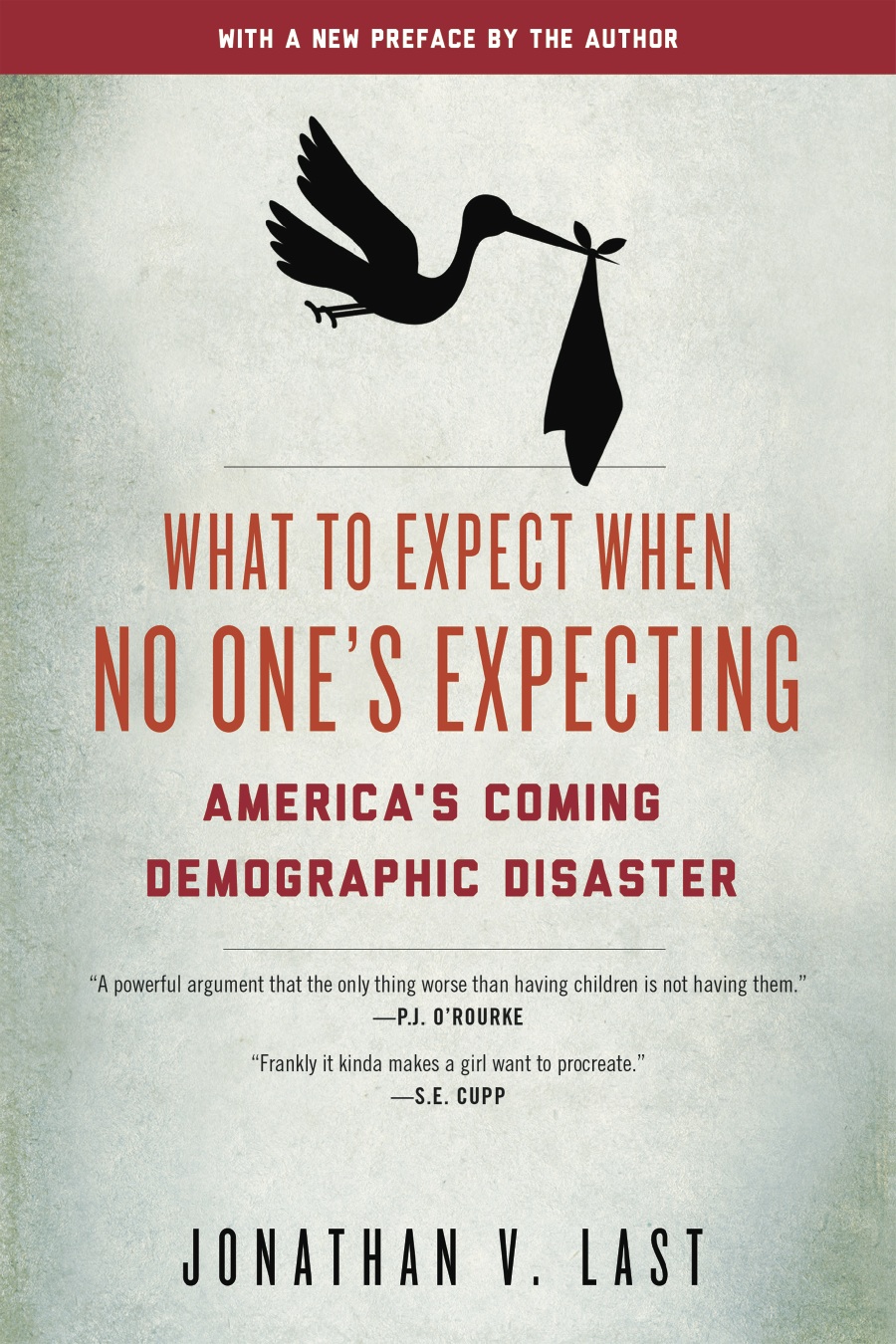February 28th, 2013
Santino puckishly notes the weirdness that the artistic community still gets the vapors thinking about the Hollywood Blacklist while simultaneously calling for Orson Scott Card to never get work again. On the one hand, this should present logic problem. But on the other hand commies > gay-marriage skeptics.
Who? Whom?
1 commentB16
February 28th, 2013
The most moving passage of Benedict’s farewell address came toward the end:
0 commentsThe gravity of the decision was precisely in the fact that from that moment on I was committed always and forever by the Lord. Always – he, who assumes the Petrine ministry no longer has any privacy. He belongs always and totally to everyone, to the whole Church. His life is, so to speak, totally deprived of the private sphere. I have felt, and I feel even in this very moment, that one receives one’s life precisely when he offers it as a gift. I said before that many people who love the Lord also love the Successor of Saint Peter and are fond of him, that the Pope has truly brothers and sisters, sons and daughters all over the world, and that he feels safe in the embrace of their communion, because he no longer belongs to himself, but he belongs to all and all are truly his own.
Public Discourse and Isabel Sawhill
February 26th, 2013
Two more reviews today. The first is by Scott Yenor at Public Discourse. It’s really high-minded–much more so, I’m afraid, than the book is. He groks What to Expect so completely that it gets a little creepy at times:
Last synthesizes scholarly research with an engaging blend of statistics, anecdotes, and judicious observations. His is very much a book for contemporary readers, as he sympathizes with many of the advances that have, in turn, fostered population decline. I imagine Last at a coffeehouse in a toney urban neighborhood, looking out at his mini-van and wondering if he and his wife should have more children. He appreciates the pull of post-family culture, but he is still a human being in the old sense of seeing himself as part of an intergenerational compact.
It’s like he’s staring into my soul.
Then there’s a piece by Isabel Sawill from Brookings. I’m a big fan of the Brookings Institution in general and Sawhill in particular. Her work is smart and incisive. In particular, her research and writing over the years on the links between marriage and prosperity have been incredibly valuable. (See here and here and here.)
She’s one of my favorite progressive sociologists because she’s always been fearless about following the data and making crucial arguments–like, for instance, about the importance of marriage as a means to ending poverty–that were unwelcome by certain other segments of the left. She’s great.
So I was a little disappointed to see her taking a shot at What to Expect by arguing (I’ll paraphrase here) that we don’t need any more babies; all we need are more immigrants. Sawhill references the book, but quotes a line from my Wall Street Journal article. And she seems to be intuiting my stance on immigration not through either of those, but rather through Ruy Teixeira’s strange review in The New Republic.
It’s all so odd that I’d ask Sawhill whether she’s read the book closely.
The reasons I’d ask are:
(1) She seems to misunderstand my thoughts on immigration entirely.
(2) She says that American fertility won’t come back even if we follow “the kind of family-friendly policies” that I support. But (a) What to Expect is incredibly modest in even putting forward policy ideas for discussion, let alone endorsing any; and (b) The book makes pretty clear that I suspect that policy changes are likely to be effective mostly at the margins.
(3) When Sawhill writes that “expecting women to rededicate themselves to producing children is not in the cards” she seems to be ignoring a large chunk of the book which deals with ideal fertility rates, the argument of which is that to the extent we do look at policy solutions, we shouldn’t be hectoring women (and men) into “rededicating themselves to producing children” so much as figuring out how to help them achieve their fertility aspirations. Again, Sawhill is arguing with a point I never make. In fact, a point which is nearly the opposite of the book’s thesis.
Sigh. It would be nice if some of my friends on the left would read What to Expect When No One’s Expecting with some care. If they did, I suspect they’d find that our points of disagreement are probably quite narrow.
As a substantive matter, I’d push back gently against Sawhill’s larger argument on two points.
The first is that it strikes me that she’s being slightly cavalier about the effect of immigration on the lower-end of the wage scale. It’s one thing to argue that this effect is a regrettable cost for a greater good. Her dismissal of immigration as only harming “some of our least-skilled workers” is particularly surprising since she has spent so much of her career examining the causes of, and solutions for, systemic poverty. One of the lessons I’ve taken from Sawhill’s work over the years is that we’re supposed to worry most about the mobility and welfare of our least-skilled workers so that they don’t fall into the underclass. This dismissal seems out of character for her.
Second, I go to great lengths in the book to detail how vital immigration has been, and continues to be, to our demographic profile. I also discuss its limits. For instance, while immigration provides a great deal of demographic relief it is, as an objective technical matter, inferior to baby-making in that it does not provide the same rejuvenation effect on a society’s age profile. For a deeper exploration of the math on this, I’d point readers to Carl Schmertmann’s work. I would have thought that Sawhill might at least acknowledge some of these limitations in the course of making her broader argument.
3 commentsAnother Day, Another Robin Death
February 26th, 2013
I checked out of the New DC close to a year ago. Now comes news that they’re killed off another Robin. (This one is Damian, the son of Bruce Wayne–not dead!–and Talia Ah-Gul.) It’s hard to work up any sort of interest in this development–it’s not outrageous or even sad. It’s just predictably boring. So DC killed its entire continuity so they could start telling fresh stories and then they have to resort to stunt deaths after–what?–18 months?
Eventually this management regime at DC will take a place next to the team behind New Coke in business school case studies of corporate folly.
But I will just note that if you click on that link and look at the three panels DC gave the NY Post, the art is, again, just embarrassing.
In other comics news, after going nearly a year without buying any current books I’ve gotten sucked in by two really promising Image titles: Revival and Thief of Thieves.
The former is something like Northern Exposure meets Wonderfalls meetsWalking Dead. The latter is sort of an appropriation of John Robbie from To Catch a Thief, but then thrown into a modern noir setting. Both series are in really early vintage–I don’t think there are even ten issues of either of them yet–so you can still jump on the train easily. Highly recommended.
3 commentsQuick Book Notes
February 25th, 2013
(1) So there’s a $999 version floating around out there? I wasn’t aware that Encounter did limited-run variant covers. This must have a foil wrapper AND a hologram.
(2) Here’s S.E. Cupp talking about What to Expect: “[T]he Malthusian paranoia of a coming population boom has nothing on the reality of a coming population implosion. Frankly it kinda makes a girl want to procreate.”
Best blurb . . . ever? If she were to say that at CPAC, it would probably push me into another printing.
0 commentsThe Catholic Church’s Real Problem
February 25th, 2013
It’s just getting killed in the social space.
Also, I’m not wild about the Church’s mobile strategy, either.
You’ve got to understand that these days, people don’t want to be tethered to just some single altar–they want to be able to take their religion on the go with them–and transfer that experience from the church, to their smartphone, to their tablet.
The church doesn’t “provide” the religion–the believer is the religion. And if the Catholic Church doesn’t get this fundamental change, they’re going to be disrupted right out business.
6 commentsBring the Sexy Back
February 22nd, 2013
Look, I get it. The site hasn’t been this monomaniacal since the run-up to The Dark Knight Rises. And this just isn’t a whole lot of fun anymore for either of us. But give me another couple weeks and we’ll be back to normal(ish).
In the meantime, I got you some stuff to make it up to you.
* From Peggy Noonan today:
The other day I was in a Wal-Mart in southern Florida. It was Sunday afternoon on a holiday weekend but even accounting for that the mood and look of the place was different from what it was two and five years ago. Then, things seemed dynamic—what buys, what an array of products, what bustle in the aisles. This time it seemed tired, frayed, with fewer families and scarcer employees. It looked like a diorama of the Great Recession.
Just savor it: Peggy Noonan. In a Wal-Mart. It’s like Lucille Bluth at Klimpy’s. Only awesomer.
But my favorite part is imagining her interior monologue from her Wal-Mart excursions two and five years ago as she observed the Mittle Americanus in their natural habitat, joyfully bustling around as they bought toilet paper and one-gallon pickle jars.
* Which brings us to: Kristen Wiig. Joining the revamped Arrested Development. As young Lucille. I’m not much for stunt casting, but this kind of feels right.
* Meanwhile, over at the Free Beacon Editor’s Blog, the Truth Monkey has the inside scoop on The All-American American. Don’t miss it.
* The big payoff in watching Bunheads these days comes from seeing the endless stream of Disney house ads for a show called Pretty Little Liars. The ads are fantastically over the top, with a Don LaFontaine-style voice always intoning about how “THIS WEEK . . . THE LIARS’ WORLD WILL BE TURNED UPSIDE . . . DOWN!!!!”
I’ve never seen the actual show, but the ads are so camptastic that I was convinced it might be kind of fun–TUNE IN THIS WEEK TO FIND OUT THAT THE LIARS AREN’T SO PRETTY ANYMORE. . . . AND THEY’RE GETTING . . . BIGGER!”
But then Entertainment Weekly had to ruin it for me by putting Pretty Little Liars on the cover and deeming the show a breakout success–in the world of social media.
Oh sure, PLL only gets 3.8M viewers per week (which for a cable show is pretty awesome)–but EW doesn’t care about that. They’re psyched that the show has 10 million Facebook Likes! And that the show’s stars have a combined 5.5 million Twitter followers.
A rational writer might look at those social media numbers, and then the show’s actual viewership, and see the story as an illustration of the limited power of social media to move consumers to action but . . . nevermind.
2 commentsThe Dog That Didn’t Bark
February 21st, 2013
Over at NRO, Kathryn Jean Lopez kindly interviewed me about What to Expect. One of her questions has gotten me thinking about the dog that hasn’t barked with regards to the book:
In trying to anticipate criticism of What to Expect, I thought that the most serious line of attack would be a feminist critique of the free market. Basically, it would go something like this:
Our consumptive, capitalist orgy has created a culture in which women are continually unable to achieve their fertility ideals. After generations of women were forced to have more children than they wanted, for lack of reliable birth control, women finally master their fertility only to have America’s capitalist system force them into having fewer children than they want. Our entire system foundationally misunderstands the worth of children, and women, and has set up an adversarial dynamic where the economy doesn’t function as well without the dynamism of women in the workplace, but the welfare state can’t function without enough babies being born, and women are kept from achieving both what they want with their minds and what they want with their bodies.
In all this, the free market not only offers no pathway forward, but it places the burdens squarely on women, and not men. The fact that women underachieve their ideal fertility rates by larger margins as they move up the economic and educational scales is further proof that our red-in-tooth-and-claw economic system simply doesn’t work. After 20 years of venerating the free market and dismissing alternative forms of economic organization, our demographic problems suggest that the free market is failing us all–and particularly women–in the most fundamental way.
I wouldn’t entirely disagree with that critique. And I try to acknowledge it, briefly, in the book.
But strangely, I don’t get the sense that anyone on the left is much interested in seeing our demographic problems as an example of capitalism failing women. Instead, I get the sense–from pieces like this–that the left is much more interested in insisting that the problem is really about protecting the relatively smaller universe of women who want to be child-free from being “forced” (somehow) into parenthood.
I’m not quite sure what it means that the feminist left’s instinctual reaction is to circle the wagons on the right to be child-free (which so far as I can tell, exactly no one is suggesting should be impinged on) rather than attacking the heartless free-market for failing women (which is what I would have expected to be the Elizabeth Warren-ish, progressive response).
Maybe it means that feminism has made its peace with capitalism and consumerism. Maybe it means there’s a split between the kind of Warren-progressive feminism and the more lifestyle-liberalism of places like Slate and Salon. Or maybe it means something else altogether.
But I suspect it means something.
4 comments





